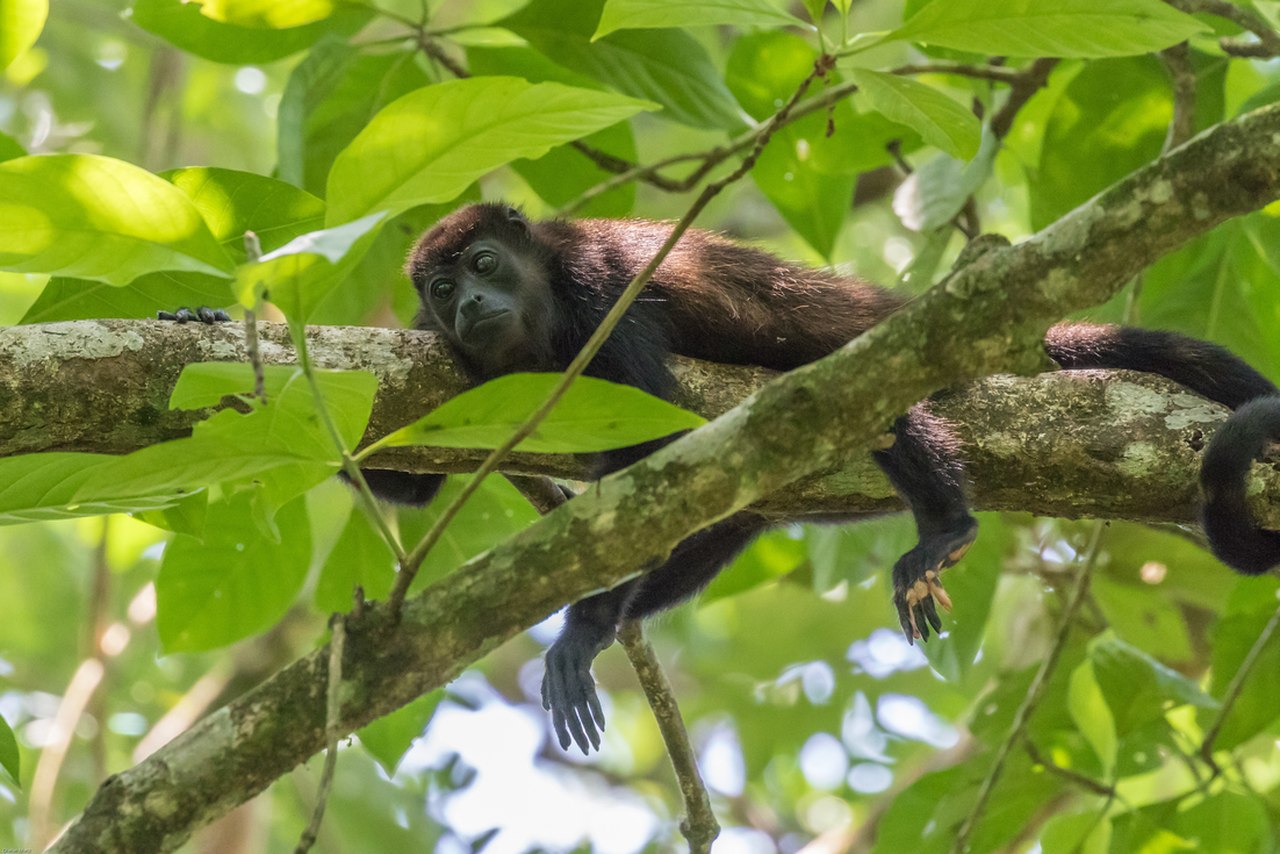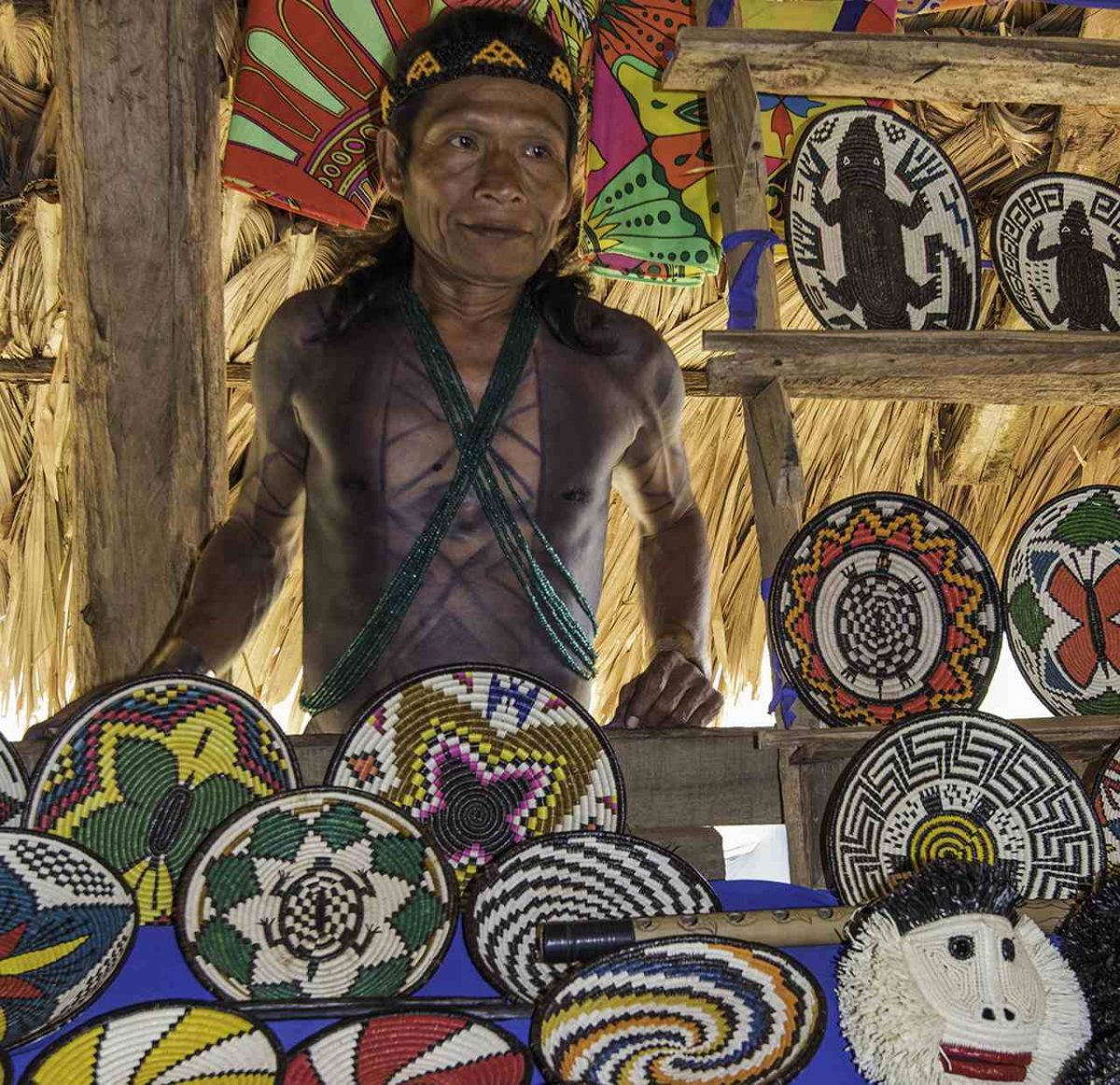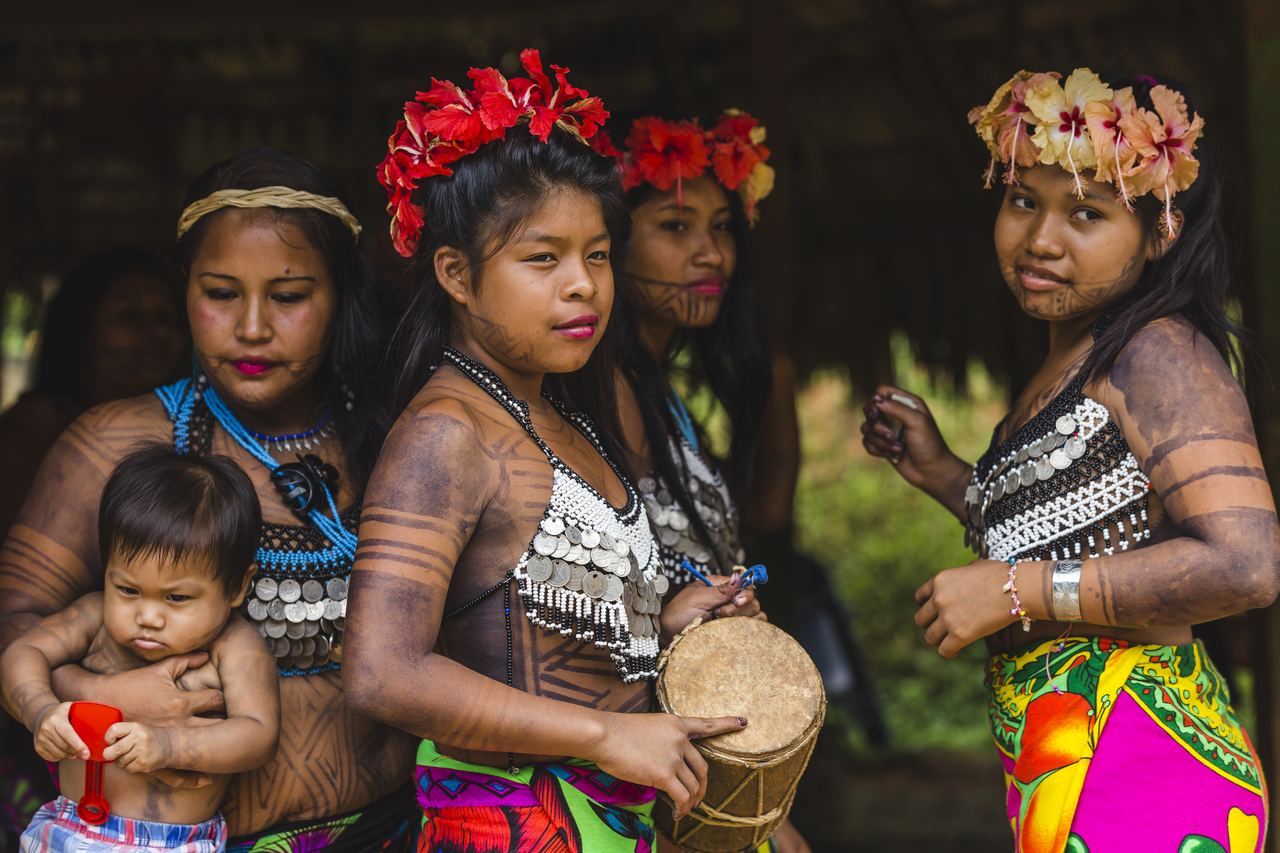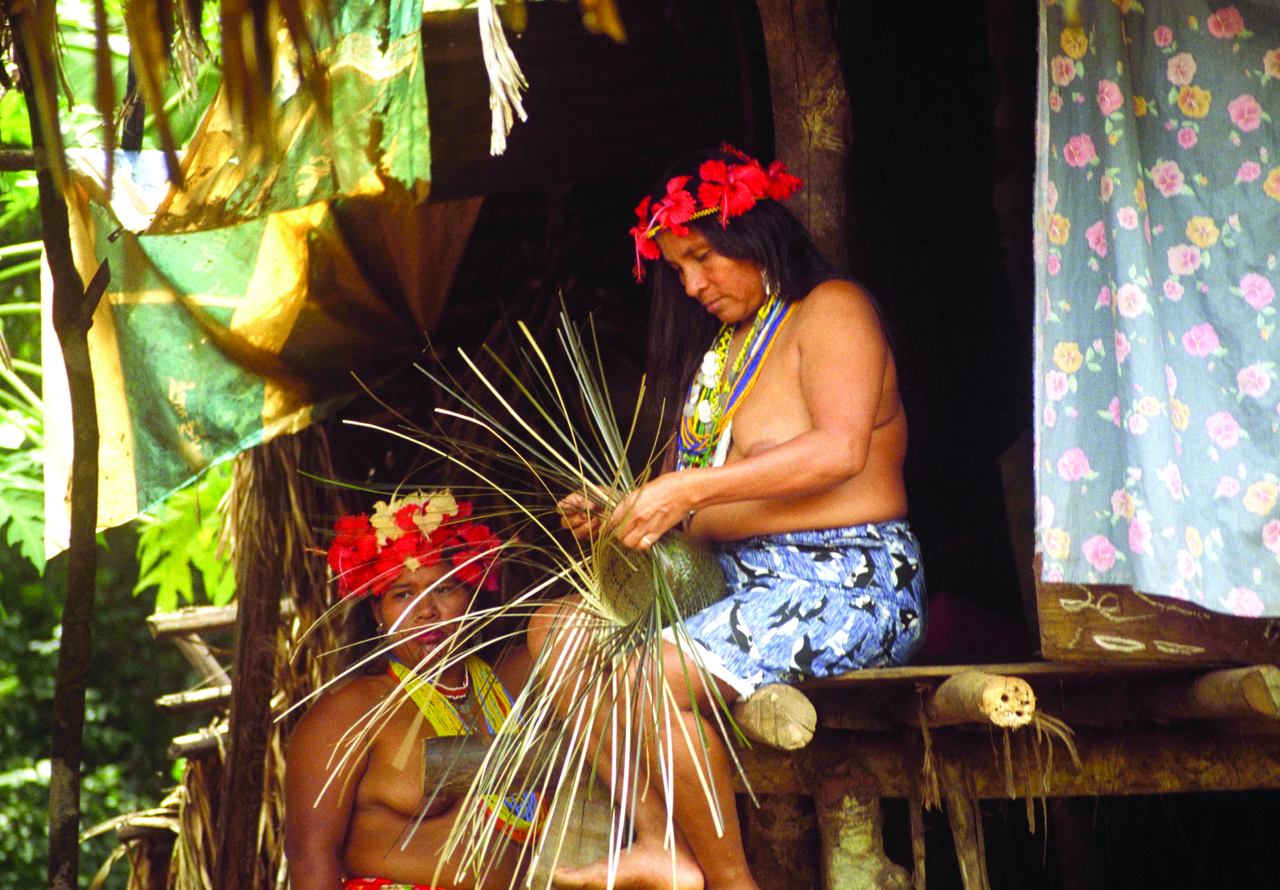Sunday, December 22, 2019, Best of Panama, Panama

The skyline of Panama City from Ancon Hill.
Panama City, Panama
Panama City, also simply known as Panama, is the capital and largest city of Panama. It has an urban population of 880,691, with over 1.5 million in its metropolitan area (Panama population is about four million). The city is located at the Pacific entrance of the Panama Canal, in the province of Panama. The city is the political and administrative center of the country, as well as a hub for banking and commerce.

Punta Paitilla view from Cinta Costera/Coastal Belt.

Iconic Famous spiral building nicknamed “El tornillo” meaning “the screw.”
The city was founded on August 15, 1519, by Pedro Arias de Ávila, also known as Pedrarias Dávila. Within a few years of its founding, the city became a launching point for the exploration and conquest of Peru and a transit point for gold and silver headed back to Spain through the Isthmus. In 1671 Henry Morgan with a band of 1400 men attacked and looted the city, which was subsequently destroyed by fire. The ruins of the old city still remain and are a popular tourist attraction known as Panamá la Vieja (Old Panama). The city was rebuilt in 1673 in a new location approximately 5 miles southwest of the original city. This location is now known as the Casco Viejo (Old Quarter) of the city.
One year before the start of the California Gold Rush, the Panama Railroad Company was formed, but the railroad did not begin full operation until 1855. Between 1848 and 1869, the year the first transcontinental railroad was completed in the United States, about 375,000 persons crossed the isthmus from the Atlantic to the Pacific, and 225,000 in the opposite direction. This traffic greatly increased the prosperity of the city during that period.
The construction of the Panama Canal was of great benefit to the infrastructure and economy. Of particular note are the improvements in health and sanitation brought about by the American presence in the Canal Zone. Dr. William Gorgas, the chief sanitary officer for the canal construction, had a particularly large impact. He hypothesized that diseases were spread by the abundance of mosquitoes native to the area, and ordered the fumigation of homes and the cleansing of water. This led to yellow fever being eradicated by November 1905, as well malaria rates falling dramatically. However, most of the laborers for the construction of the canal were brought in from the Caribbean, which created unprecedented racial and social tensions in the city.
During World War II, construction of military bases and the presence of larger numbers of U.S. military and civilian personnel brought about unprecedented levels of prosperity to the city. Panamanians had limited access, or no access at all, to many areas in the Canal Zone neighboring the Panama city metropolitan area. Some of these areas were military bases accessible only to United States personnel. Some tensions arose between the people of Panama and the U.S. citizens living in the Panama Canal Zone. This erupted in the January 9, 1964 events, known as Martyrs' Day.
In the late 1970s through the 1980s the city of Panama became an international banking center, bringing a lot of undesirable attention as an international money-laundering locale. In 1989 after nearly a year of tension between the United States and Panama, President George H. W. Bush ordered the invasion of Panama to depose General Manuel Noriega, the country's de facto dictator. As a result, a portion of the El Chorrillo neighborhood, which consisted mostly of old wood-framed buildings dating back to the 1900s (though still a large slum area), was destroyed by fire. In 1999, the United States officially transferred control of the Panama Canal Zone to Panama, which remains in control today.
The city of Panama is still a banking center, although with very visible controls in the flow of cash. Shipping is handled through port facilities in the area of Balboa operated by the Hutchison Whampoa Company of Hong Kong and through several ports on the Caribbean side of the isthmus. Balboa, which is located within the greater Panama metropolitan area, was formerly part of the Panama Canal Zone, and the administration of the former Panama Canal Zone was headquartered there.
PANAMA CITY (FUERTE AMADOR)
A gleaming city of high rises on the Pacific, Panama City
gracefully blends new and old. At once a
rousing tribute to international finance and a rich reminder of a colonial
past, it is Central America’s unparalleled cosmopolitan center. The atmospheric Old Town, The Casco Viejo,
straddles a peninsula and hosts some of the nation’s most prized cultural and
historic treasures, including churches, palaces, and plazas. The grand structures were built on this site
after the original Panama Viejo was destroyed by fire in 1671 by the then
governor to foil an attack by the pirate Henry Morgan. Nearby, one of the world’s greatest
engineering feats, the Panama Canal, conveys ships along its 48 miles to the
Caribbean Sea.
Best of Panama
We learned the highlights of Panama on this
wide-ranging excursion. We started with a scenic eco-minded boat ride to Gatun Lake—a
large, man-made freshwater lake created when the Gatun Dam was built in the
early 20th century. Its jungle-covered islands and the surrounding waters are
home to numerous flora and fauna. Our trained naturalist guide will talk about
this delicate ecosystem and point out wildlife. We sailed past the stumps of old
mahogany trees that stick out above the water, and kept watch for capuchin and
howler monkeys jumping through the trees—sometimes these curious creatures get
close to the boat to investigate. After, we met the Emberá Indians—a local tribe
that still lives in harmony with their rain forest surroundings. We enjoyed a
traditional tribal performance, then continue to the Agua Clara Visitor Center
for panoramic views of the Panama Canal’s ongoing expansion projects.
Old US Army Command Headquarters on a former secure installation.

George Washington Goethals (June 29, 1858 – January 21, 1928) was a United States Army General and civil engineer, best known for his administration and supervision of the construction and the opening of the Panama Canal. He was the State Engineer of New Jersey and the Acting Quartermaster General of the United States Army.
Chief engineer of the Panama Canal
Whether contract employees or government workers would build the canal was controversial. Bids for the canal's construction were opened in January 1907, and Knoxville, Tennessee-based contractor William J. Oliver was the low bidder. Stevens disliked Oliver, and vehemently opposed his choice. Although Roosevelt initially favored the use of a contractor, he eventually decided that army engineers should carry out the work. According to the book The Panama Canal: An Army's Enterprise, Goethals made such an impression on William Howard Taft, then Secretary of War, that Taft recommended him as an engineer for the Panama Canal. Stevens, frustrated by government inaction and the army involvement, resigned from his position.
In February 1907 US President Theodore Roosevelt appointed Colonel George Washington Goethals chief engineer of the Panama Canal. The building of the Canal was completed in 1914, two years ahead of the target date of June 10, 1916.
Colonel Goethals received great praise from visiting engineers and from the technical press of the world. In 1913 the degree of LL.D. was conferred on him by the University of Pennsylvania, and in the spring of 1914 he was awarded medals by the National Geographic Society, the Civic Forum (New York), and the National Institute of Social Sciences. In 1914, Goethals and William Crawford Gorgas were awarded the inaugural Public Welfare Medal from the National Academy of Sciences. Also, Congress awarded Goethals their thanks and a promotion to Major General. President Wilson appointed Goethals as the first Civil Governor of the Panama Canal Zone.
More buildings on the old US Army installation.
Failed to write down this guy's name. Help, please!
Old US Army hospital near Colon; now a very nice hotel.
Bamboo.
Ant nest; made from saliva.
Ceiba or Kapok tree.
Ceiba pentandra is a tropical tree of the order Malvales and the family Malvaceae (previously separated in the family Bombacaceae), native to Mexico, Central America and the Caribbean, northern South America, and to tropical west Africa. A somewhat smaller variety is found throughout southern Asia and the East Indies. Kapok is a name used in English speaking countries for both the tree and the cotton-like fluff obtained from its seed pods. In Spanish speaking countries the tree is commonly known as "ceiba." The tree is cultivated for the seed fiber, particularly in south-east Asia, and is also known as the Java cotton, Java kapok, silk-cotton, samauma, or ceiba.
It looks pregnant; it's a collection of rain water holding for annual dry season.
Look closely side to side mid-way up. Worker ants carrying food to the nest.
Our cruise boat on Gatun Lake.
Blue heron.
Same rodent before.
Ant nest of another variety.
Vulture.
Hotel roof from lake.
Cormorant.

Howler monkey.
More cormorants.
The Emberá People
Approaching Emberá Indians' village; population about 75.
The boat pulled up to small dock below a group of palm thatched huts on an isolated island. We were going to visit the protectors of the rainforest, The Emberá. They consider the rain forest as their mother. They believe if their people disappear so will the forest.
These indigenous people are found in both the Darien region in Panama and the Choco region of Colombia. Many of their villages had to be moved to higher ground when the Chagres River was dammed to create Gatun Lake.
The men wore loincloths and the women colorful cloth skirts and bodices covered in shiny coins. Their bodies were covered in dark body paintings (containing mosquito replant). Their wide smiles allayed any concerns the dark colored body art might have caused us.
They still live along the lake and make their living from handicrafts made from the world around them. We were greeted by a Emberá band playing homemade instruments while the women of the village waved.
Tribal chief with young son; elected every five years.
The Emberá are a very friendly and accommodating people who willingly share their culture with visitors. Eco-tourism is not only supplementing their economy but helping to strengthen traditional customs and skills.
We took seats in the common house on a bench of logs. Communal houses have large sloping roofs of palm fronds and are by far the largest building in the village. Our guide, Geronimo, translated the welcoming speech by the village elder from Spanish into English.

Chief's father and former chief.

It was interesting to learn how these native people make the beautiful baskets, carvings, musical instruments, and jewelry from the bounty of the jungle. They even use dye made from a jungle fruit for their intricate body paintings.
The chief described how his people use natural materials to make their baskets, trays, and some jewelry. They are made from a fiber they call “chunga.” The woven items vary in sizes and color, but all the items take hours to make.
The women do most of the weaving and make smaller pieces to sell to tourists. The men work to get the fibers as they are on the top of the palm trees. The fibers are then dried and later colored with natural dyes.
The most common colors are natural white, brown, and black. The brown color is produced by boiling the fiber with pieces of cocobolo wood. The black is produced by submerging brown dyed fibers into the dark mud of the river from which they come out black.
Cocobolo is a beautiful tropical tree and a favorite carving material of the Emberá people. It has a deep brownish-red color. Emberá people are expert wood carvers. The work is intricate and impressive. We bought small baskets to remind us of these talented people.
The women of the village performed a traditional dance to the music of the handmade instruments played by the men. The dance signaled the end of the ceremony that greets and informs the visiting tourists.
While our shipmates browsed the items each family had for sale we wandered around the village to view the homes and people. We saw a young boy playing with his pet, a small coatimundi. We were intrigued by the body art and intricate designs we saw on the villagers. We smiled when we noticed many of the silver coins adorning the women’s bodices were American nickels, dimes, and quarters.
The black body painting that nearly all members display are not permanent tattoos. The Emberá use the Jagua fruit to produce a black dye to paint people’s skins. The designs create an indelible two-week tattoo.
The Jagua body painting is still in use for all celebrations and is one a very important tradition of these people. The painting helps everyone connect to the spiritual world and bonds them to their culture.

On the end of our small boat trip to the Emberá village.
Now at observation point of new, wider canal for larger ships.
The smallest toll ever charged was thirty-six cents (fees are based on water displacement); the largest container ship with over 14,000 containers is charged $1.2 million! But it must be cost effective alternative compared to going around Cape Horn. 75% of the revenue is needed for constant maintenance of the canal and 25% goes to the government for education and gasoline discounts to citizens. Each ship going through the canal requires twenty-six millions gallons of water; the new, wide canal recycles 60% of the water.
Pictures above and below of newly designed gates for wider locks.
Wider locks above.
Wheels from trains to haul canal construction materials in the early 1900s.
A newer, larger container ship waiting to enter now locks.

Almost back to our cruise port.
Bio museum near our port.
Our new yacht with helicopter on top! Ha.
Tomorrow is a sea day before stopping in Costa Rica.




































































































Comments
Post a Comment